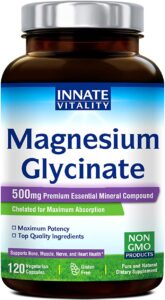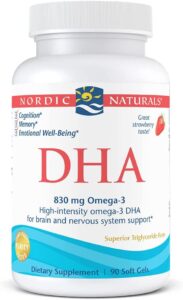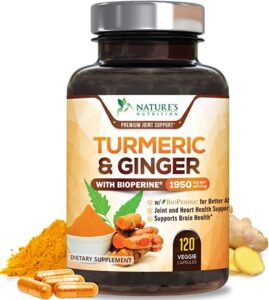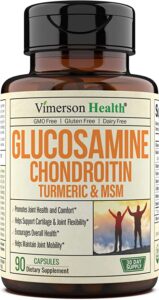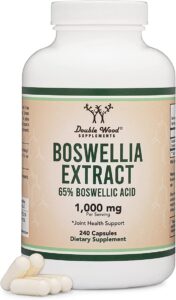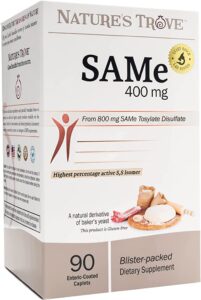Disclosure:
The Knowledge Guide may earn a commission when you purchase through links on our site. As an affiliate, we only promote products and services that we believe in and use ourselves.
Cortisone injections are a common treatment option for managing chronic pain. They are typically used to reduce inflammation and pain in areas such as joints, tendons, and muscles. However, while cortisone injections can provide short-term relief, they are not without risks. As a pain management doctor, I strongly recommend limiting the number of cortisone injections to 3 or 4 per year. In this blog post, I will explain why this is the case and provide information about the risks associated with these injections.
What are Cortisone Injections?
Before we delve into the risks associated with cortisone injections, let’s first understand what they are. Cortisone is a type of steroid hormone that is produced naturally by the body’s adrenal gland. It is a powerful anti-inflammatory and is often used to manage pain caused by conditions such as arthritis, tendonitis, and bursitis.
Cortisone injections involve injecting a small amount of synthetic cortisone directly into the affected area. The goal is to reduce inflammation and pain. While cortisone injections can be effective in providing short-term pain relief, they are not a long-term solution.
Injections that use cortisone:
- Joint injections – shoulder, knee, hip, ankle, elbow
- Trigger point injections – local muscle injections
- Epidural steroid injections
- Facet joint injections
- Some nerve blocks – carpal tunnel, occipital nerve, and many others
The Risks of Cortisone Injections
While cortisone injections can be effective in reducing pain and inflammation, they are not without risks. Here are some of the risks associated with cortisone injections:
Risk of Weight Gain
Cortisone injections can cause weight gain, which can be especially concerning for patients who are already overweight. This is because cortisone can increase appetite and cause the body to store more fat. It is important to note that weight gain can also increase the risk of other health problems such as diabetes and heart disease.
Risk of Diabetes
Cortisone injections can increase blood sugar levels, which can be particularly problematic for patients with diabetes. Patients with diabetes should be closely monitored after receiving a cortisone injection to ensure that their blood sugar levels remain within a healthy range.
Risk of Osteoporosis
Cortisone injections can also increase the risk of osteoporosis, a condition that weakens bones and makes them more susceptible to fractures. This is because cortisone can interfere with the body’s ability to absorb calcium, which is necessary for healthy bones.
Risk of Immune System Dysfunction
Cortisone injections can also suppress the immune system, which can make patients more susceptible to infections. This is because cortisone can reduce the production of white blood cells, which are responsible for fighting off infections.
Why Limiting Cortisone Injections is Important
Given the risks associated with cortisone injections, it is important to limit their use. Here are some reasons why:
To Minimize Risk of Side Effects
By limiting the number of cortisone injections, we can minimize the risk of side effects such as weight gain, diabetes, osteoporosis, and immune system dysfunction.
To Encourage Long-Term Solutions
While cortisone injections can provide short-term pain relief, they are not a long-term solution. By limiting their use, we can encourage patients to seek out long-term solutions such as physical therapy, exercise, and other non-invasive treatments.
To Avoid Over-Reliance on Medication
Limiting the use of cortisone injections can also help patients avoid over-reliance on medication. Patients who receive too many cortisone injections may become dependent on them for pain relief, which can be problematic in the long-term.
Conclusion
As a pain management doctor, I strongly recommend limiting the use of cortisone injections to 3 or 4 per year. While they can be effective in providing
short-term pain relief, the risks associated with cortisone injections make it important to use them judiciously. By limiting the number of injections, we can minimize the risk of weight gain, diabetes, osteoporosis, and immune system dysfunction. Additionally, limiting the use of cortisone injections can encourage patients to seek out long-term solutions for their pain, which can ultimately improve their overall health and well-being.
If you have questions or concerns about cortisone injections, please speak with your pain management doctor. They can provide you with more information about the risks and benefits of this treatment option, and help you determine whether it is appropriate for your specific needs.
FAQs
- Are cortisone injections safe? While cortisone injections can be safe when used appropriately, they are not without risks. Some of the risks associated with cortisone injections include weight gain, diabetes, osteoporosis, and immune system dysfunction.
- How many cortisone injections can I have in a year? As a general rule, it is recommended that patients limit the number of cortisone injections to 3 or 4 per year. This can help minimize the risk of side effects and encourage long-term solutions for pain management.
- Are there alternatives to cortisone injections for managing pain? Yes, there are many alternatives to cortisone injections for managing pain. Some of these include physical therapy, exercise, acupuncture, massage, and non-steroidal anti-inflammatory drugs (NSAIDs).
- Can cortisone injections make my pain worse? While cortisone injections can be effective in reducing pain and inflammation, they can also cause pain and discomfort in some patients. If you experience pain or discomfort after receiving a cortisone injection, please speak with your pain management doctor.
- How long does the pain relief from cortisone injections last? The length of pain relief from cortisone injections can vary depending on the individual patient and the specific condition being treated. In some cases, pain relief may last for several months, while in others it may only last for a few weeks. Your pain management doctor can provide you with more information about what to expect from cortisone injections.
Rainier Guiang, MD is a board certified specialist in interventional pain management and practices in southern California at University Pain Consultants.
Related: Spinal Decompression vs. traction therapy.
Supplements that decrease inflammation that do not contain cortisone
Vitamin D3
Vitamin D3, also known as the sunshine vitamin, has been linked to various health benefits, including reducing chronic pain. Chronic pain is a debilitating condition that affects millions of people worldwide, and research has shown that a deficiency in vitamin D can exacerbate the condition. Vitamin D3 plays a crucial role in reducing inflammation, which is one of the primary causes of chronic pain. Studies have also shown that vitamin D3 supplementation can help improve muscle and bone health, which can reduce the risk of injury and chronic pain. Additionally, vitamin D3 has been found to improve mood, which can help manage the psychological effects of chronic pain. Overall, vitamin D3 can be an effective and safe addition to the treatment plan for those suffering from chronic pain.
Magnesium Glycinate
Magnesium glycinate is a form of magnesium that has been gaining popularity for its potential benefits in reducing chronic pain. Magnesium is an essential mineral that plays a crucial role in the body’s many functions, including nerve and muscle function, energy production, and protein synthesis. Magnesium glycinate is an easily absorbed form of magnesium that has been shown to have a calming effect on the body, which can help reduce pain and inflammation. Studies have also shown that magnesium glycinate can help improve sleep quality, which is essential for those suffering from chronic pain. Chronic pain can often lead to sleep disturbances, which can further exacerbate the condition. Magnesium glycinate can also help reduce muscle tension, which is a common cause of chronic pain. Overall, magnesium glycinate can be an effective and safe supplement for those looking for natural ways to manage chronic pain.
DHA
DHA, or docosahexaenoic acid, is a type of omega-3 fatty acid that has been studied for its potential benefits in reducing chronic pain. Omega-3 fatty acids are essential nutrients that are known for their anti-inflammatory properties, and DHA is one of the most potent forms of omega-3s. Chronic pain is often associated with inflammation, and research has shown that increasing the intake of DHA can help reduce inflammation in the body. DHA has also been found to improve nerve function, which can help alleviate neuropathic pain. Additionally, DHA may help reduce the need for pain medication, as it has been shown to improve pain tolerance. Overall, increasing DHA intake through supplements or a diet rich in omega-3s can be an effective and safe way to manage chronic pain.
Tumeric and Ginger
Turmeric and ginger are two natural spices that have been shown to have powerful anti-inflammatory properties. Both contain compounds called curcuminoids and gingerols, respectively, which are known for their ability to reduce inflammation in the body. Chronic inflammation is a significant contributor to many health conditions, including chronic pain, arthritis, and heart disease. Studies have shown that turmeric and ginger can help reduce inflammation by blocking the production of inflammatory molecules in the body. Additionally, these spices may help reduce oxidative stress, which can also contribute to inflammation. Turmeric and ginger can be easily added to the diet through supplements or by incorporating them into meals and can provide a safe and natural way to reduce inflammation and manage chronic pain.
Glucosamine and chondroitin are compounds that are naturally found in cartilage and have been studied for their potential benefits in reducing joint pain and improving joint function, particularly in people with osteoarthritis. Osteoarthritis is a condition in which the cartilage that cushions the joints breaks down, causing pain, stiffness, and inflammation. Glucosamine and chondroitin are thought to work by providing the building blocks needed to repair and maintain cartilage, as well as reducing inflammation in the joints. Studies have shown that glucosamine and chondroitin can help reduce joint pain, improve joint function, and slow the progression of osteoarthritis. However, the evidence for their effectiveness is mixed, and more research is needed to fully understand their potential benefits.
Boswellia is a resin that is extracted from the Boswellia tree and has been studied for its potential benefits in reducing inflammation and pain, particularly in people with osteoarthritis and rheumatoid arthritis. The active compounds in boswellia, called boswellic acids, have been shown to have anti-inflammatory and analgesic (pain-relieving) properties. Boswellic acids are thought to work by inhibiting the production of inflammatory molecules in the body, as well as reducing the activity of enzymes that break down cartilage in the joints. Studies have shown that boswellia can help reduce joint pain, improve joint function, and reduce the need for pain medication in people with osteoarthritis and rheumatoid arthritis. However, more research is needed to fully understand the potential benefits of boswellia for pain management.
S-adenosyl methionine (SAM-e) is a compound that occurs naturally in the body and plays a role in several biochemical processes. SAM-e is involved in the methylation process, which is a chemical reaction that adds a methyl group to molecules, such as proteins, DNA, and neurotransmitters. Methylation is important for regulating gene expression, maintaining the structure of proteins, and producing neurotransmitters that regulate mood.
SAM-e has been studied for its potential benefits in reducing pain, particularly in people with osteoarthritis and depression. SAM-e has been shown to have anti-inflammatory and analgesic (pain-relieving) properties, and it is thought to work by inhibiting the production of inflammatory molecules in the body and increasing the activity of enzymes that break down inflammatory molecules. Additionally, SAM-e has been shown to have antidepressant effects and may help reduce pain associated with depression by increasing the levels of neurotransmitters that regulate mood. However, more research is needed to fully understand the mechanisms by which SAM-e works and its potential benefits for pain management.




